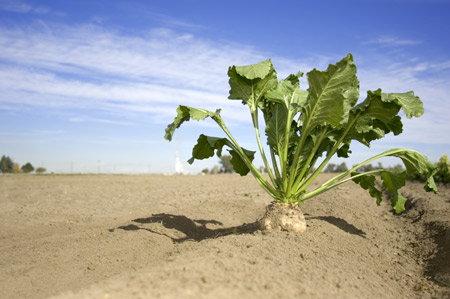A ”No-Gravy” Year for 2016 Beets
Category: Sugar
 (AgWeb) – American Crystal Sugar Co. has confirmed the final payment for 2015 sugar beets will be $49.77 per ton, but the first projected payment is $38 per ton for 2016 beets.
(AgWeb) – American Crystal Sugar Co. has confirmed the final payment for 2015 sugar beets will be $49.77 per ton, but the first projected payment is $38 per ton for 2016 beets.
“The primary factors driving the decrease from the final 2015 crop payment to the November forecast are lower sugar content, lower sugar and agri-product net selling prices, and higher operating costs per ton,” said Thomas Astrup, president and CEO, in a Nov. 4 letter to shareholders.
“With a very large crop harvested, our actual beet storage and processing results will play a large role in determining the actual payment,” Astrup said in the letter. He said the co-op discussed the payment in detail at factory district meetings, completed Nov. 10. The meetings covered the sugar market, Washington policy matters and crop and factory topics.
Astrup, who is new to the position since September, declined to be interviewed about the payment level. The company’s annual meeting will be held in December in Fargo, N.D.
$3 unit retains
The company announced “unit retains” amounts at $3 per ton, which is less than the $4 held from last year’s payment. The amount is essentially a loan the cooperative takes from its own members, so that it doesn’t have to borrow that amount.
Officials at Minn-Dak Farmers Cooperative in Wahpeton, N.D., said they are not releasing any payment projections for the 2016 crop. The company recently told growers they would leave 12 percent of their acres in the field as a result of an unexpectedly high yield.
Brian Ingulsrud, vice president for agriculture at American Crystal, said sugar content in this year’s beets is the lowest it’s been in for several years. “That’s the flip side of getting those high tons per acre,” he said.
Rain and yields
Average Crystal sugar content is 17.02 percent throughout the valley, with the high of 17.2 percent in the Moorhead, Minn., factory district and the low end of 16.9 percent in East Grand Forks, Minn., and Drayton, N.D. The sugar content variation was not as great as the yield variability. Yield ranged from 36.4 tons per acre in the Crookston, Minn., district, and the low was 25 tons at Drayton.
“In both cases, it was due to rain,” Ingulsrud said. “Both got pretty close to the same amounts of rain. The difference was Drayton had more rain than normal in 2015, so the soils were already saturated. When we got rain this year, it really didn’t have any place to go. And a lot of the rain came early, before the beets were mature enough to handle it.”
In Crookston, the rains came later and the prior year was very dry. “We had a lot of room in the soil to absorb it. And we got it later in Crookston, generally.”
Looking ahead, Ingulsrud says it’s been warmer than desired to keep the piled sugar beets. But he said they went into the piles cooler than last year’s beets did.
There have been “little flare-ups of heat here and there” of warming beets in storage piles, but nothing like this time last year, where beets went into the piles dry, Ingulsrud said. One negative is there’s more mud in the piles, especially in the northern parts of the Red River Valley. That prevents the beets from breathing well in the piles.
“So far, the beets have been slicing at a very nice pace, which will help with a really long storage season,” he said.
Some growers said the projected $38-figure seemed like a steep drop from the $43- to $44-per-ton figure they expected them to be.
$1K per acre cost
Andrew Swenson, North Dakota State University Extension Service farm management specialist, said the cost-of-production for sugar beets ranges from $900 an acre to $1,200 an acre, with an average of about $1,000 acre. That varies depending on how much equity the farmer has in the business, which increases if the producer owns his land and beet cooperative stock.
“At $38 a ton, I think you’d need about 26 tons per acre to break-even,” he said. That doesn’t count the amount needed to return to labor and management. Swenson gets information from farm business education programs in Minnesota and North Dakota in the Red River Valley, where beets are grown.
“If you get really good yields, a guy’s not going to get rich on it but get by,” Swenson said. A similar thing is happening in the corn crop, which pencils out if you get 180 bushels to 200 bushels per acre.
The beet payment projection goes up or down can also depend on how well the beets store in the piles. The company needs to process almost 12 million tons of beets, compared to the 10.8 million-ton “sweet spot,” they usually shoot for.
Beet growers have had a “yoyo” of sugar beet returns in the past few years. Profits were strong in 2012, weak in 2013, and have been up and down since.
“Historically, beets have been a good crop, beneficial to the Red River Valley,” Swenson said.




